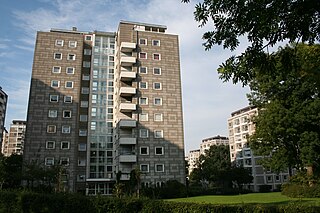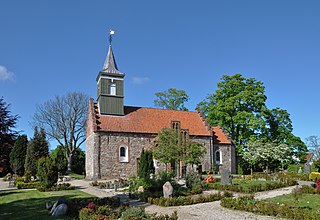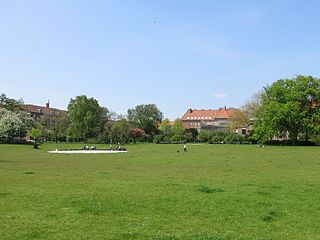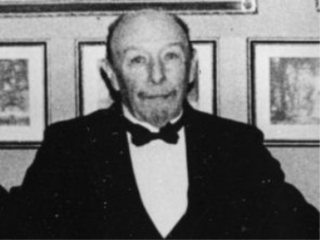External links
- Danish Society for Nature Conservation - official web site in English
- Danmarks Naturfredningsforening - official web site in Danish
- Danmarks Naturfredningsforening - official Facebook page (in Danish)
The Danish Society for Nature Conservation, in Danish Danmarks Naturfredningsforening, founded 1911, is an incorporated non-governmental organization based in Denmark. It works for environmental protection and biodiversity, improved environmental legislation, consideration for the natural environment in public planning, and public access to natural resources.
The Society is a member of the International Union for Conservation of Nature. [1] Its name has been translated into English in several different ways, including Danish Nature Preservation Foundation, [2] Danish Society for the Conservation of Nature, [3] and Danish Society for Nature Preservation, [4] but 'Danish Society for Nature Conservation' is the English term which the society uses itself. [5]
The Society was founded on 21 April 1911 at the Palace Hotel in Copenhagen as the 'Society for Nature Conservation (Forening for Naturfredning). For many years, its focus was on promoting public access to beaches and forests, particularly to the Øresund Strait and the Jægersborg Deer Park. By 1912 it was campaigning against litter, with the slogan "Sandwich wrappers and eggshells don't look pretty in forest pools!" [6] [7] [8] It also opposed billboards along country roads and campaigned for the maintenance of roadside trees and boulders.
By 1925, the Society had over 3,000 members, and in the same year it changed its name to the Danish Society for Nature Conservation (Danmarks Naturfredningsforening), signifying that it had gained a nationwide status. In 1937, as the result of the intervention of the Danish Prime Minister Thorvald Stauning, the Nature Conservation Act was modified to give the Society a statutory status in conservation matters.
In 1987, the Society's membership peaked at 260,784. However, although competition with similar bodies has now led to a fall to some 140,000 members, [5] it remains the largest nature conservation and environmental organisation in Denmark. [9]
The Society has more than ninety branches and employs a secretariat of some fifty people. [9] Its national offices are at Masnedøgade 20, Copenhagen. [10]
As well as books and leaflets, the Society publishes the quarterly journal Natur og Miljø ('Nature and Environment'), [11] with a circulation of around 160,000. [12]

Valdemar IV Atterdag, or Waldemar was King of Denmark from 1340 to 1375. He is mostly known for his reunion of Denmark after the bankruptcy and mortgaging of the country to finance wars under previous rulers.

Johan Georg Forchhammer was a Danish mineralogist and geologist.
KBUs Pokalturnering was a Danish regional knockout association football competition contested annually from 1910 to 1953 by clubs that were members of the regional football association Copenhagen FA (KBU). Organised by and named after KBU, the competition rules has varied from being open to all Copenhagen clubs and being a closed tournament (1920–1946) reserved only for the highest ranking clubs, and as a consequence the number of participants have varied greatly throughout its history. For the first 10 seasons, between 7 and 13 teams participated until a fixed number of 8 teams was introduced from 1920 until 1946. When both the Sommerpokalturneringen and the KBUs B-Pokalturnering, both featuring the lower ranking KBU teams, were discontinued after their 1946 edition, the Copenhagen FA again allowed lower ranking clubs to participate in the association's primary cup competition, increasing the number of teams to 52. For the most part, the competition took place in the fall season and since the 1913 edition culminating in a final played at Københavns Idrætspark that saw large attendance figures and generated much media coverage.

Bellahøj is an area situated 5 kilometres to the northwest of central Copenhagen, Denmark. It features the Bellahøj Houses, a functionalist housing project, as well as parkland with an open-air theatre. The 37 metre high hill situated in Bellahøj Park is the highest point in Copenhagen. The area offers an extensive view over the skyline of Copenhagen.

Prince Viggo, Count of Rosenborg was a Danish prince. He was born in Copenhagen the youngest son of Prince Valdemar of Denmark and Princess Marie of Orléans. He was also the youngest grandson of Christian IX of Denmark.

Østre Anlæg is a public park in Copenhagen. Once it was a part of the old city fortifications. The park was designed by landscape architect H.A. Flindt who also designed Ørstedsparken and Copenhagen Botanical Garden on the old fortification. The park lies between The National Art Museum at the southern end, and Oslo Plads and Østerport Station at the northern end. There are three lakes in this park, they used to be part of the moat system.

Johan Theodor Holmskiold was a Danish noble, botanist, courtier and administrator. He was noted for his scientific work with fungi and development of the Charlottenborg Botanical Garden. His career included work as director of the Danish Postal Services and the Royal Porcelain Factory.

Nødebo is a village located on the southwestern shores of Lake Esrum in Hillerød Municipality, North Zealand, some 40 km north of Copenhagen, Denmark. Nødebo Church, the oldest in the area, is notable for its church frescos and its early 16th century altarpiece. Nødebo Kro a historic inn, now serves as a community centre and local cultural venue. Nødebo is surrounded by Forest of Grib on three sides. Its par force hunting road well-preserved network was declared a UNESCO World Heritage Site in 2015. The Forest and Landscape College, now part of University of Copenhagen's Department of Geosciences and Natural Resources Management, is located in the northern part of Nødebo.

N. Zahle's School is a private school located on Nørre Voldgade in Copenhagen, Denmark. Named after its founder, Natalie Zahle (1827–1913), it now consists of two independently run primary schools and a Gymnasium.

Valdemar Ingemann was a prolific Danish architect active during the late 19th and early 20th century. His works include the Royal Copenhagen Porcelain Manufactury in Frederiksberg, Copenhagen.

Astrid Stampe Feddersen, usually known as Astrid Stampe, (1852–1930) was a Danish women's rights activist and author alongside her sister Rigmor Stampe Bendix. Stampe joined the women's movement early on and from 1883 to 1887, she was on the board of the Danish Women's Society, playing an active part in work on women's issues.

Lindevangsparken is a public park in the Frederiksberg district of Copenhagen Denmark. It is in the so-called Lindevang neighbourhood between Peter Bangs Vej to the south and Finsensvej to the north.. Established in 1932, it is the oldest municipal park in Frederiksberg and with its area of 33,000 square metres is also the largest. The much larger and older Frederiksberg Park and Søndermarken are both state-owned.
The Danish Outdoor Council is a non-governmental umbrella organisation for organisations active in the promotion of outdoor, recreational activities as well as nature protection interests in Denmark. It was founded on 27 November 1942 and now has 94 member organisations.

The Chief of the Army Command is the service chief of the Royal Danish Army. The current chief is Major general Gunner Arpe Nielsen.

Valdemar Michael Amdrup was a Danish lawyer and the second president of the Danish Society for Nature Conservation from 1915 to 21.

Jean de Coninck (1744–1807) was a Dutch-Danish merchant and ship-owner. In 1785, he joined his elder brother, Frédéric de Coninck, as partner in the Copenhagen-based trading house Coninck & Reiersen. He purchased the country house Marienborg in 1803 and was from 1806 a co-owner of the Royal Danish Silk Manufactury in Bredgade. He served as Russian consul in Copenhagen.
The Danish Defence Staff is a senior command authority within the Danish Defence, responsible for leadership, administration, and staff support.
Ingeborg Marie Raunkiær née Andersen, pen name Box, was a Danish writer who published books and contributed articles to magazines and newspapers. She is remembered for Mand og Kvinde which she published anonymously in 1909 and for what she considered to be her most important work, I Danmark (1911), presenting nature's development throughout the year in the form of diary entries. Her numerous articles were both humorous and satirical.
Maria Reumert Gjerding is a former Danish politician and the current president of the Danish Society for Nature Conservation. She was a member of the Folketing for the Red-Green Alliance political party from 2015 to 2018.
Claus Ebbe Bjørn was a Danish author, historian, and television and radio broadcaster, who was Associate Professor of Agricultural History at the University of Copenhagen, Chairman of the Danish Agricultural History Society and Member of the Royal Danish Society of the History of the Fatherland.